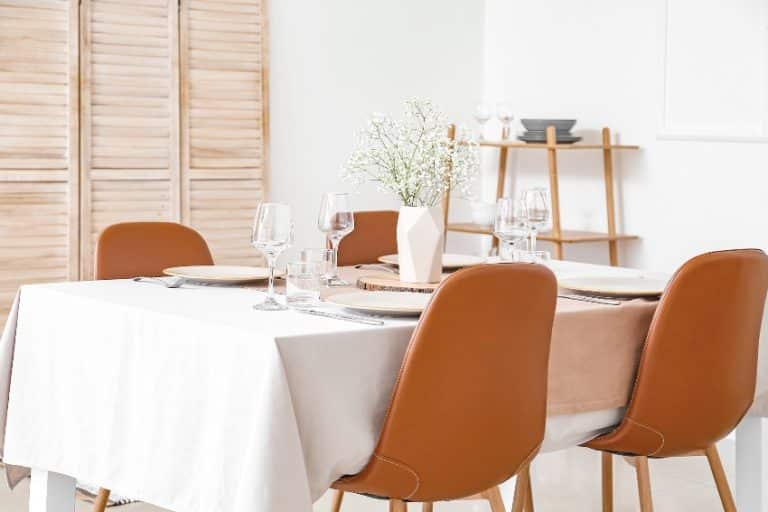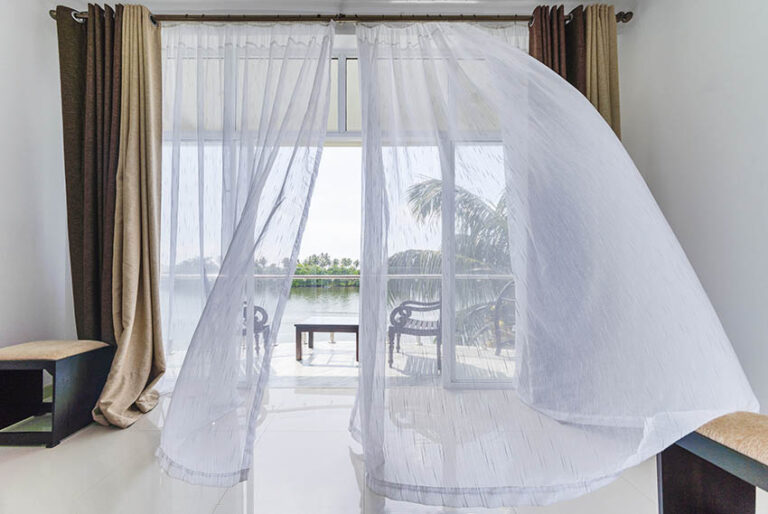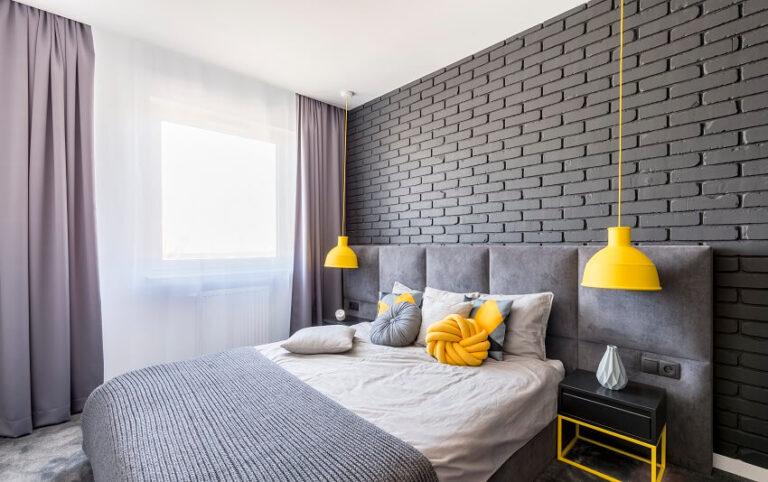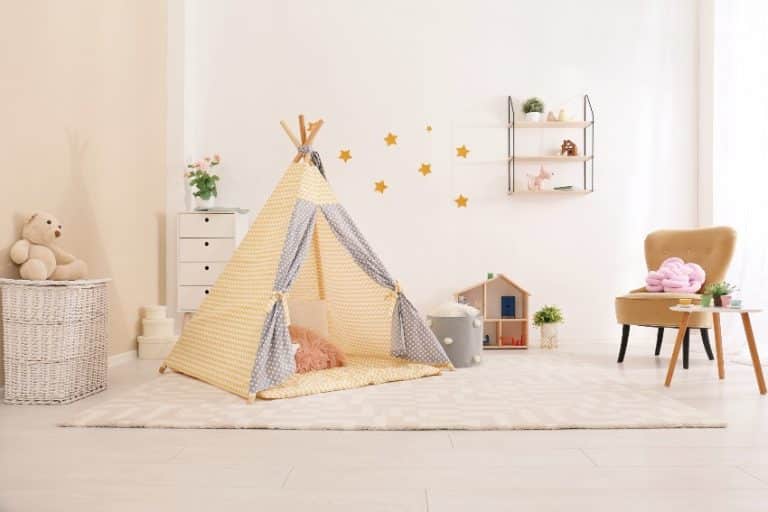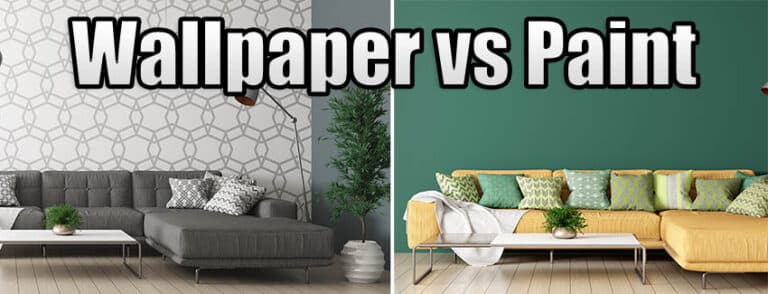What Are The Main Types Of Linen Fabric? Patterns, Blends & Uses
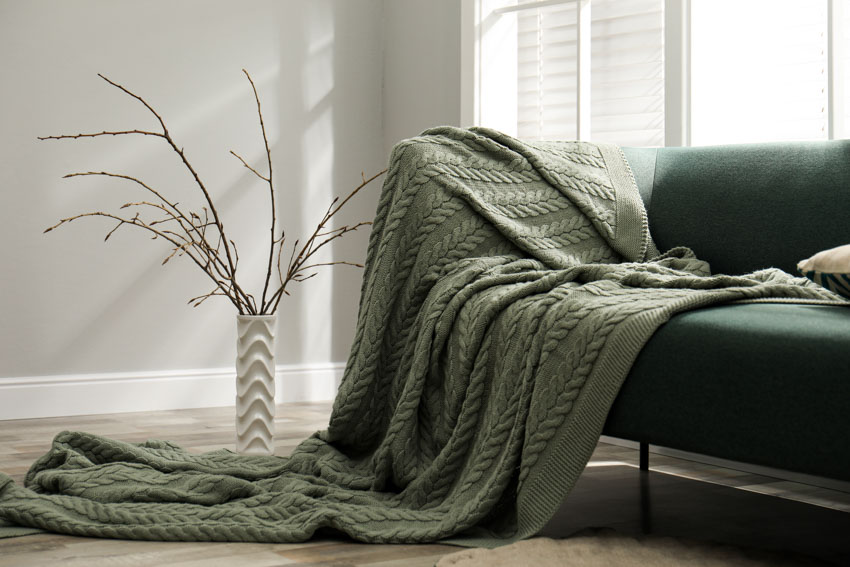
From clothes to bedding to blankets, linen fabric seems to have created a dynasty of its own founded on the material’s features and established popularity that dates back several centuries into the past. Lightweight and showcasing natural beauty, linen fabric is a top choice for many, from the rich and powerful men and women in ancient Mesopotamian society to today’s summer fashion and trend.
If you’re planning on adding a bit of linen fabric to your home, exploring everything about it is a good starting place. And after learning what it is, you can next check out the different types of linen fabric you can actually consider.
What Is Linen Fabric
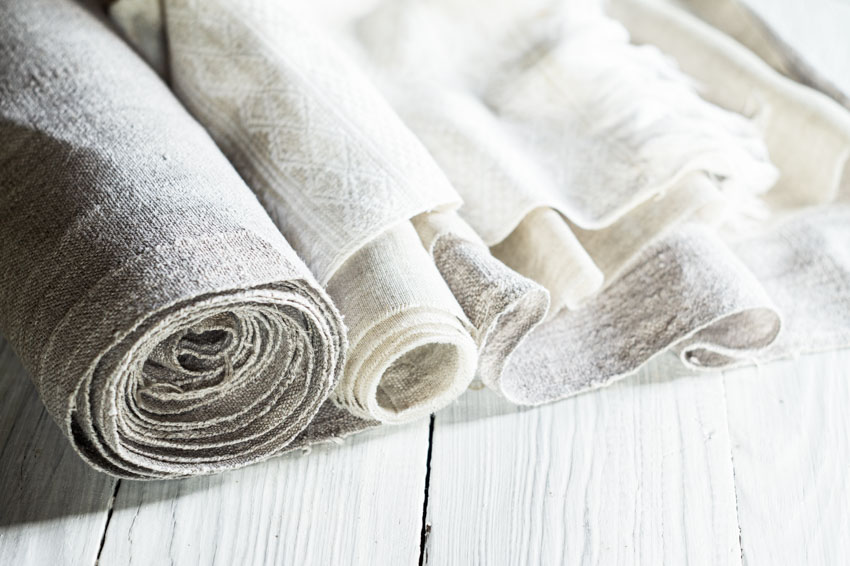
Linen fabric is a textile produced from flax plant fibers, giving it its popular softness, durability, and antibacterial characteristics. This purple plant grows worldwide, particularly in western Europe. The earliest evidence of its existence dates back to the prehistoric time 36,000 years ago with the European Neolithic people. This is the reason why it is considered one of the longest-produced textiles in the world.
Throughout history, linen fabric made its appearance known, including 10,000 years ago in ancient Mesopotamia as a fabric limited to the powerful and wealthy, in ancient Egypt and Greece extended its use to the entire society. This is also the case with the Phoenicians who introduced its production to Western Europe. In the 18th century, Belfast, Ireland was renowned as Linenopolis- to commemorate the town’s thriving linen production and trade.
Today, linen is one of the most useful and flexible fabrics with a rich history to boast. And from a time-consuming and laborious production process, it has gotten rid of many of the problems and issues it experienced back then. The process is more convenient and cost-effective. While it first appeared in ancient Mesopotamia and was introduced to Western Europe by Phoenicians, the top manufacturer of today’s linen fabric is China.
To help you decide if this fabric is what you want, here is a summary of factors and how linen fabric performs with them.
| Factors To Consider | Linen Fabric |
| Thread count | 200 to 2,000 |
| Biggest producer/importer | China |
| Cost | Between $5 and $12 per yard (More expensive than cotton) |
| Strength | Durable and highly absorbent |
| Fabric breathability | Lightweight and highly breathable |
| Versatility | Highly versatile- can be blended with other materials to reduce cost |
| Moisture resistance | Resistant and quick-drying |
| Tendency to wrinkle | Prone to wrinkling |
| Recommended washing temperature | Cold, warm, or hot |
| Washing/Maintenance | Special care to avoid shrinkage |
Types Of Linen Fabric Patterns And Uses
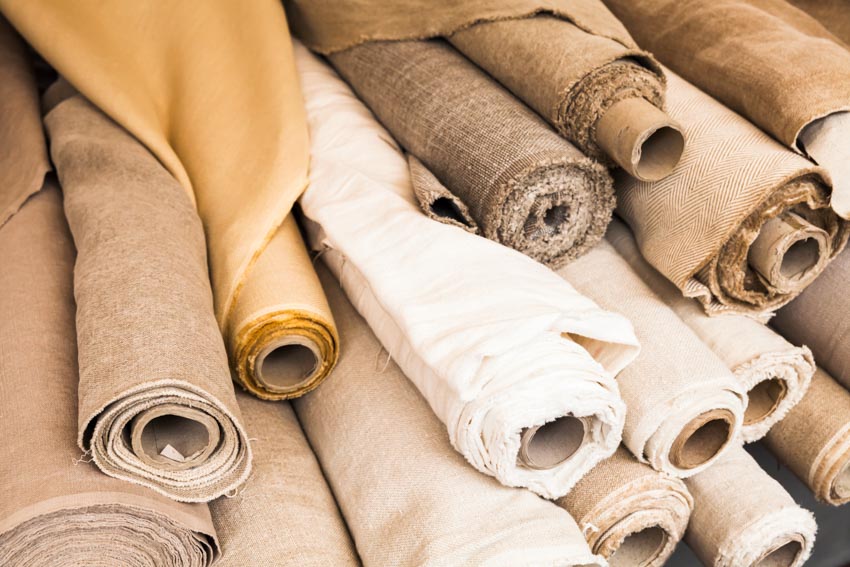
If you’re going for linen fabric, you need to consider what type to choose based on its use and fabric patterns. There are different varieties you can check out and you can match them based on their common applications. From there, you will decide which type is ideal based on what you’re planning to use it on.
The selections were limited in the past but with the innovation of technology and processes, it has produced different types you can take into account with their own corresponding durability, softness, and texture. Identifying some of the most common types can help make a decision on the fabric you can use.
Close-Weave Linen
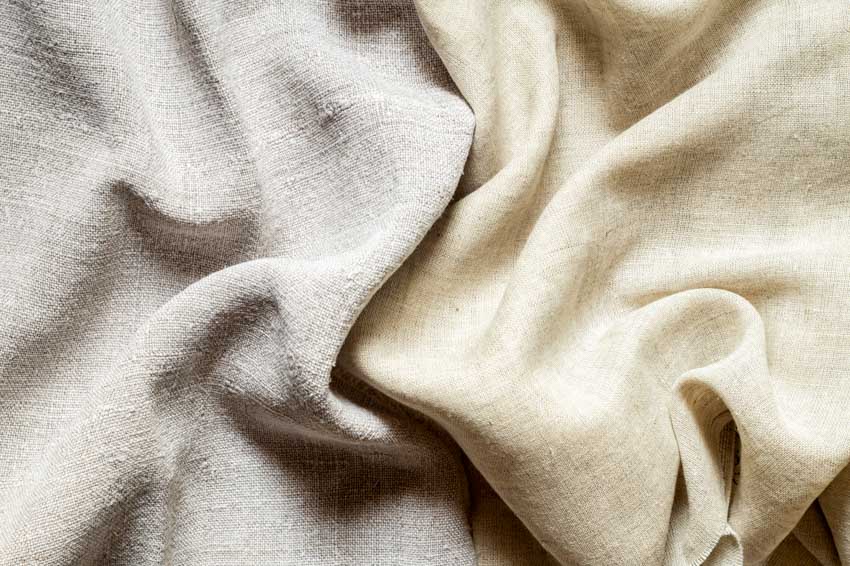
Ideal usage: Bedding and apparel
Many fabrics have been tightly woven to improve their durability and be able to withstand wear and tear on a daily basis. If a fabric is tighter, it means that it is stronger and more durable. This is why close-weave types of linen fabric are popular for homecare applications. The most common fabrics that are tightly woven are satin, blackout, duck, jacquard, tweed, and twill.
Close-weave linen is a popular option for bedding and clothing applications. Since the fibers are tightly and closely woven, the fabric is more durable and can be used every day with ease. Using it for your bedding and clothes will not be an issue. And the best thing is that the fabric will turn remarkably soft in time after multiple uses.
Loose Weave Linen
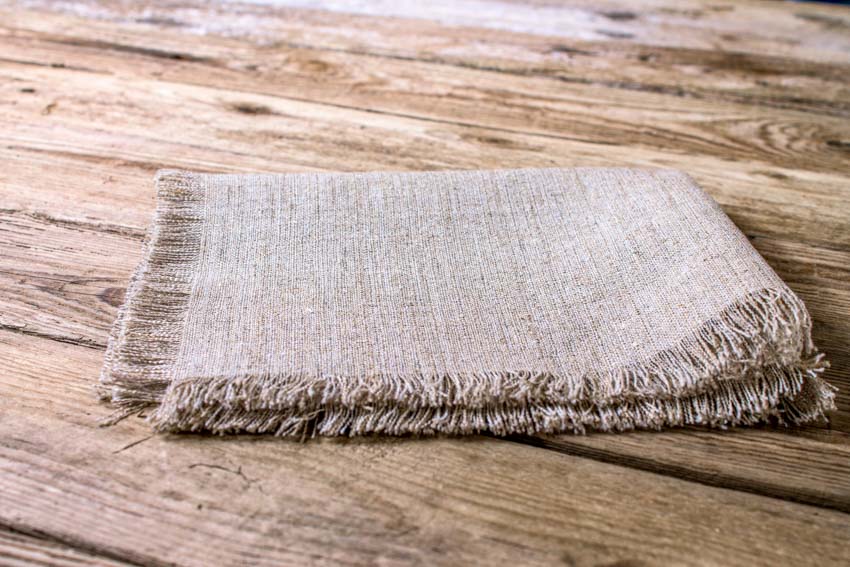
Ideal usage: sanitary napkins and reusable diapers
Loose weave linen is the exact opposite of close-weave linen since the fabrics are loosely woven, making the fabric not as durable as the close-weave one. While it may not be as durable as close-weave types, it is guaranteed to be more and highly absorbent. This characteristic makes it an excellent choice for sanitary napkins and reusable diapers.
There are many versions of loose-weave fabric you can consider and some of them are blended with other materials like cotton so that they can be more applicable for garments. One popular variety of loose-weave linen is the bird’s eye with a pattern resembling an eye of a bird.
Plain Weave Linen
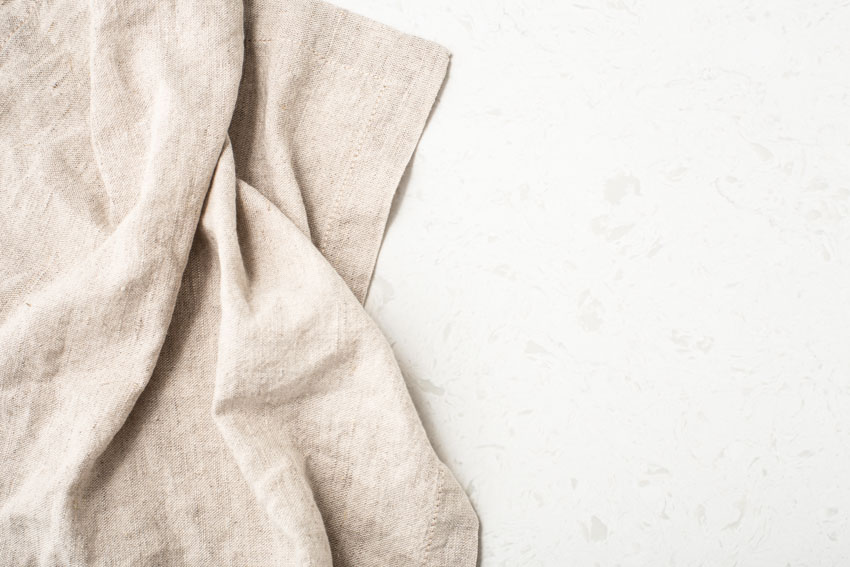
Ideal usage: cotton towels, dish towels, hand towels, and reusable napkins
Plain weave linen is another type that’s easily recognizable for its natural checkered pattern. It’s a bit similar to loose-weave linen in the sense that it is also readily absorbent, making it a good option for dish types of towels and reusable napkins.
The major difference though is that since it is only relatively loose in its weaving, it is still durable and won’t depreciate in quality with usage and time. This type is simple in structure but may be considered the most useful when it comes to household application, particularly in the kitchen.
It is both durable and soft, making it comfortable to use even on a daily basis. The striped/checkered pattern is also pleasing to look at, adding to the charm of this type. Some of the varieties of plain weave is handkerchief style (for blouses and handkerchiefs), holland, (for lampshades and window shades), and butcher’s linen (for aprons and other heavy-duty clothing).
Damask Linen
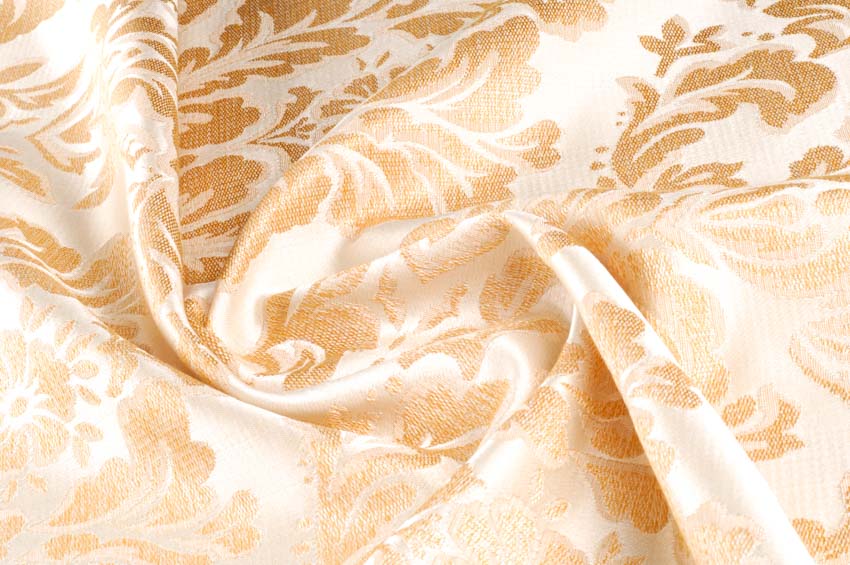
Ideal usage: ornate tablecloths and other decorative items
Damask linen is the luxurious and delicate variety among the types. It is popular for its aesthetics, which is why it is often used for decorative purposes. With its name originating from Damascus, the capital of Syria, and the central textile trading point between the West and the East, damask linen has a rich aesthetic as rich as the city it was named from.
Created on a jacquard loom, damask linen is usually compared to embroidery due to how it looks. It is, however, more delicate and complex than embroidery since its weaving process actually includes the intention of an ornate look even with its subtle appearance. Damask is so delicate that it can only be used for special occasions and is not structured for everyday use. It is the common fabric chosen for ornate tablecloths, showcasing a mix of the smooth texture you’d only usually see in satin but with the strength that comes with linen fabrics.
It also comes in different variations and one popular variety is the Venice linen, which is identifiable for its large floral prints and is usually used as a graceful drape only used for special events.
Sheeting Linen
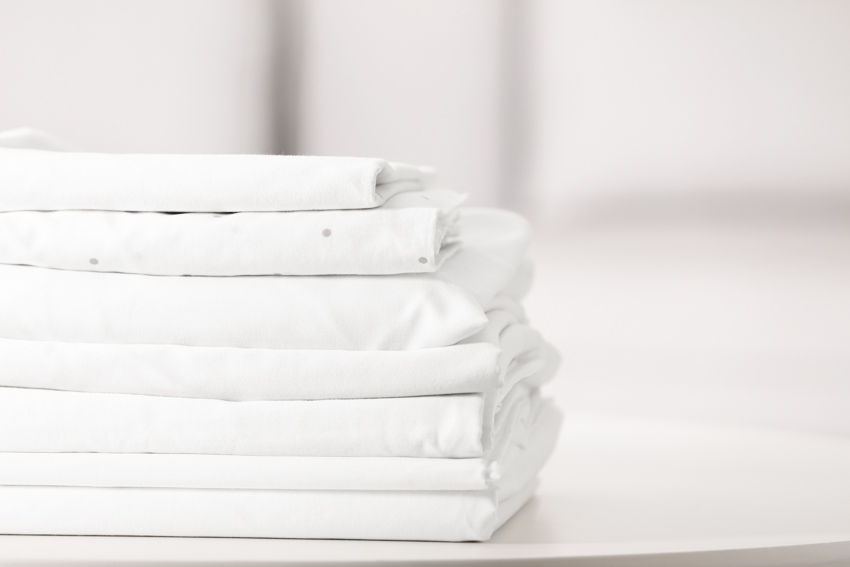
Ideal usage: apparel and bedding applications
Sheeting linen is notable for its extremely wide and heavy construction. It has an untextured appearance but showcases a close-weave structure and so a higher thread count compared to other types. It is also highly versatile and can be used both for bedding and apparel applications. It can be a good option for certain types of bed sheets as well as for your dresses and suits.
Sheeting linen got its name for its main usage, which is for sheets. Despite being heavy, linen sheets are soft to touch. It is also widely produced and manufactured for bed sheets.
Toweling Linen
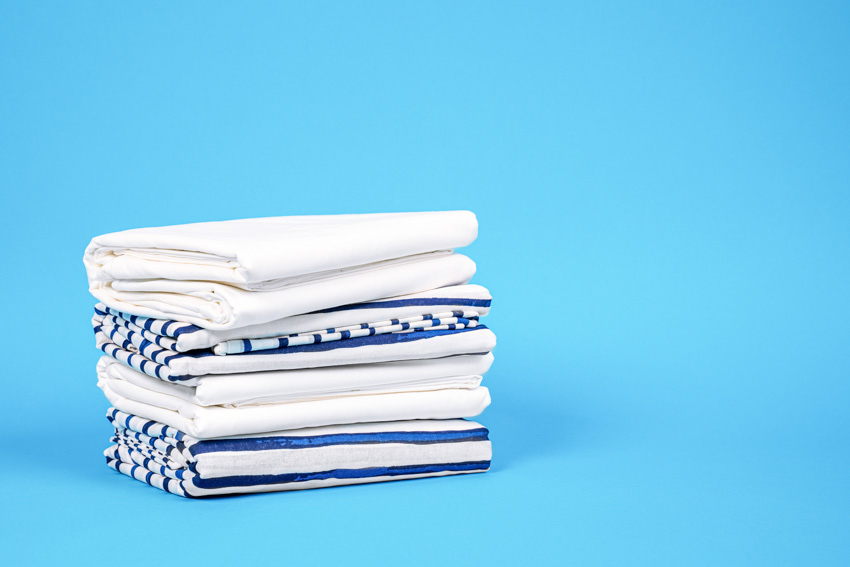
Ideal usage: dish cloths and towels
Toweling linen sports a looped weave that’s unique and fascinating in its own right. The fact that it’s named “toweling” is due to the main application of this type, which is for towels. It is also absorbent and soft if only based on the main purpose of this fabric.
There is a wide variety of toweling types that come in different sizes and widths, depending on where they will be used in the first place. Whether you’re looking for a piece of fabric for a dishcloth or a bath towel, there will be something available for you that will match the desired width and size.
Types Of Linen Blends

Linen fabric can be quite expensive. It is in fact known as one of the most extensive natural fabrics in the world. Because of this, many manufacturers see it necessary to do something that can lessen the price while at the same time benefiting from the features offered by linen. The solution? Mixing it with other materials will do the trick!
Besides the different patterns and use, there are also different types of fabrics based on their blends and the materials they are mixed with. The good thing about this material is that it can easily be blended with other materials which can result in more than just reducing the cost but also improving the fabric and creating something better from it. Here are some of the popular blends you can check out.
Linen and Cotton
Cotton is considered one of the most popular fabrics you can encounter in the market and it is highly regarded due to its softness and breathability. Produced from the fibers of the cotton flower, it is woven with twists and overlapping fibers to create the softness it is popular for. The fabric is also naturally white, making it very easy to match with other colors and textures.
Combining cotton and linen, both highly breathable will result in a very soft fabric. If you will choose a mix of 50% linen and 50% cotton, you will have a creaseless crisp fabric with a more textured body. This will be a perfect option for specific apparel like jackets, skirts, dresses, and aprons.
A piece of soft and wrinkle-free fabric is an incredible option for clothing. One variety of this type that is a blend of cotton and linen is the huckaback type. This lightweight and absorbent lenient is used for towel lengths.
Linen and Rayon
Rayon is another fabric that can be blended with linen. It is a manufactured fiber that’s created using wood pulp, chemicals, and cellulose. Rayon is softened in order to make it possible to be mixed with linen, which has a softer touch to it.
While the two are very different from each other, they have similar purposes, especially when it comes to clothing and household applications. Somehow, the natural fibers combined with the synthetic ones of rayon work well together.
The blended linen and rayon fabric result in a substantially soft fabric that has a subtle sheen to it and with a more fluid drape. The softness comes from the fabric while the subtle sheet and graceful draping come from the rayon fabric.
Linen And Polyester
Polyester is a durable synthetic fabric that’s well-known for its resistance to stains and wrinkles, making it a desirable fabric option. It is even able to easily retain its shape well without putting too much effort into it. Besides that, it is also lightweight, quick to dry, and very easy to dye. It is an incredible fabric to consider.
When polyester is blended with linen, it helps reduce the cost of the natural fiber and lessen the wrinkles that it may get. This means you won’t have to pay so much for your fabric and spend so much time ironing the fabric.
Besides that, since polyester dyes well, it also helps linen retain its color after some time. And you won’t even have to worry about the softness of the fabric since both are breathable and lightweight.
Linen Fabric Pros and Cons
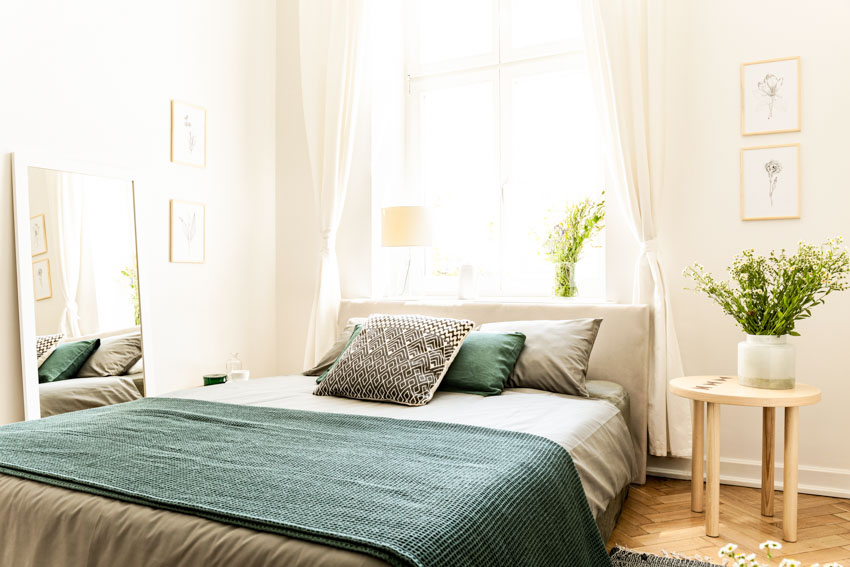
Pros of Linen Fabric:
The fabric is highly versatile and can be used in a variety of applications, including the following:
• Bedding (used in blankets, sheets, duvet covers, and certain types of pillow cases)
• Dish/tea towels
• Napkins
• Tablecloths and table runners
• Bath towels
• Bags and purses
• Clothing and suits (skirts, shirts, dresses, aprons, and jackets)
• Shoes
• Handkerchiefs
• Diapers
• Luggage
• Wallpaper
• Upholstery (such as furniture seats and sofas. See more types of couch fabrics here)
Linen fabric is the preferred garment during the summer by most homeowners, as well as in locations with humid and hot climates. With low heat retention abilities, it is less likely for you to sweat a lot when using linen as bedding, blanket, or even as clothes. And since linen only has around 200 to 2,000 thread count, the fabric is lightweight and highly breathable.
Linen fabric has this silky texture that’s a bit crispy when new but then softens with use and time. It’s why it can last for a long time since it gets more comfortable to use in time. This fabric can also stay flat and firm when used as bedding so you won’t have to fix it flat every now and then.
Cons of Linen Fabric:
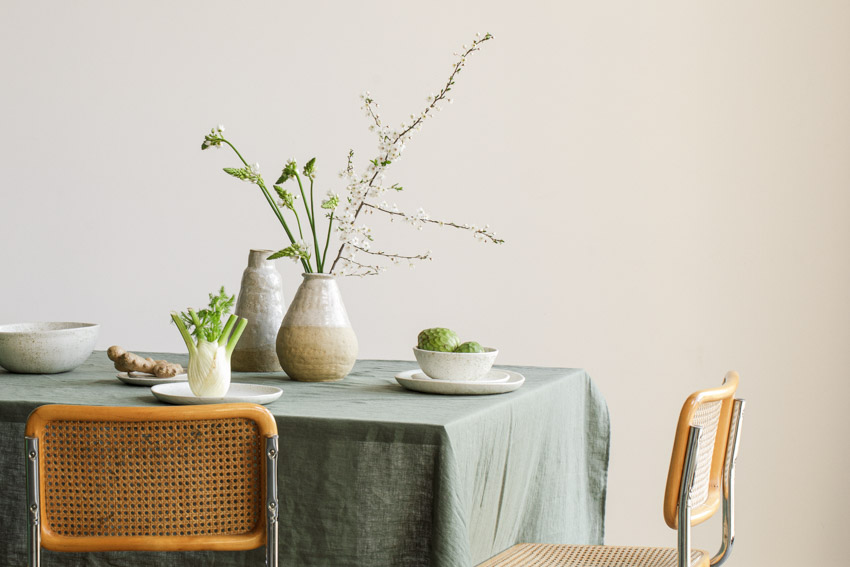
The cost of linen fabric falls between $5/yard and $12/yard and for this reason, it is considered one of the most expensive natural fibers offered on the market. Despite this cost, it remains high in demand though, which is also why many blends the fabric with other materials to lower the cost in some way.
The fabric has low elasticity/stretchability or give and so dimensions will be highly important when using it for household applications, like bedding and tablecloths. And with its durability, lint cannot be created in the process.
What Is The Best Quality Linen Fabric
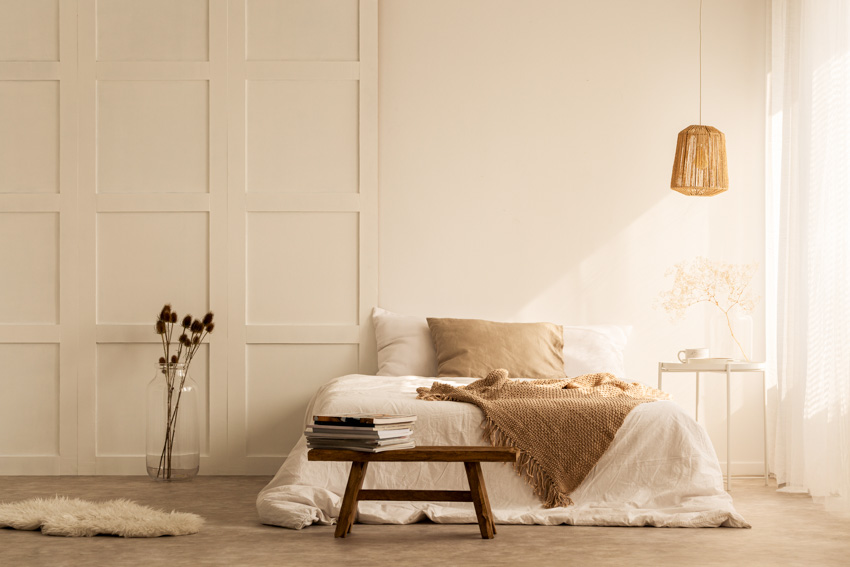
Choosing the best quality linen fabric will require a thorough exploration and comparison of all the types in the market. And what makes a fabric have the “best quality” is also highly debatable since it can mean durability or aesthetics, depending on how you define quality. It can even mean being costlier compared to other line fabrics.
If you are an eco-saver and into environmentally friendly choices, going for pure linen is the best way to go. Blended linen fabrics are usually mixed with synthetic fabrics to get the desired characteristics from them. And from there, you will also need to take into account where you will use the fabric for.
For heavy-duty and daily use like kitchen towels and bed sheets, close-weave linen fabric is an excellent option. You need a durable fabric that won’t decrease in quality in time after several uses. For a special occasion that will require a bit of attention to its aesthetics, damask linen is the way to go. Its ornate and delicate patterns will give you the subtle touch of beauty you will want to be showcased in special events.
Without having to consider many factors, European linen seems to be making its own name in terms of general quality. The excellent quality comes from the growing conditions that allow the flax plant to flourish. From the rich soil to the damp ocean climate, the condition is able to produce long flax fibers that are better for when they are woven into a fabric.
See more related content in our article about the different curtain fabric types on this page.


